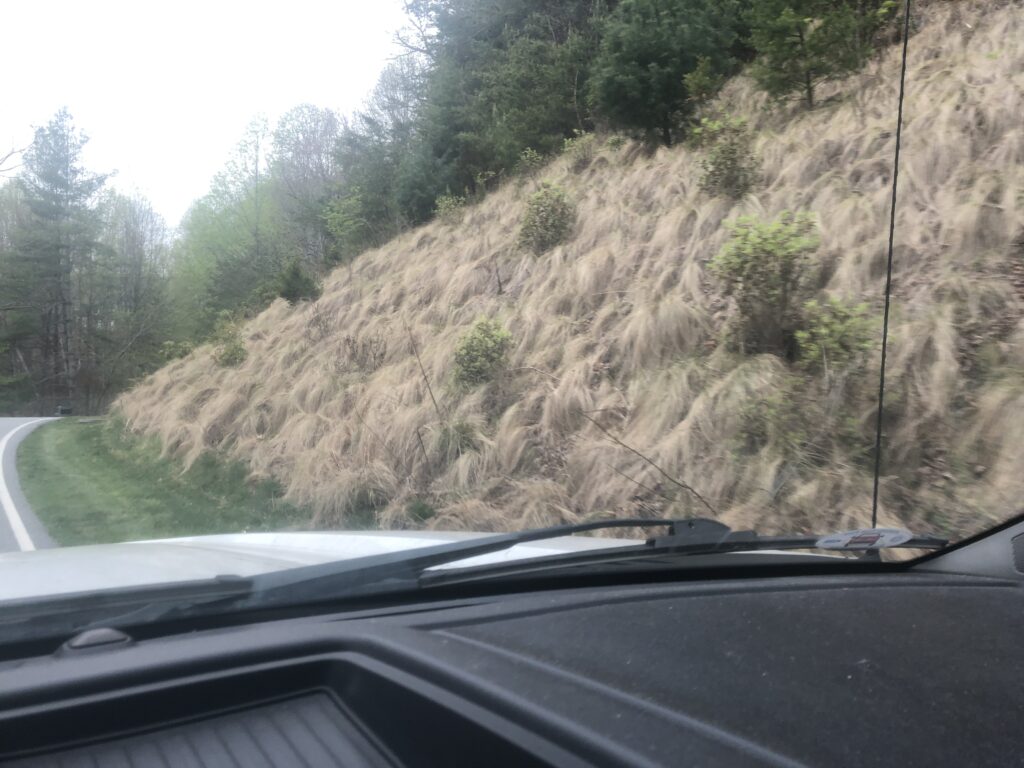Covering Bare Soil Post Hurricane Helene
go.ncsu.edu/readext?1086283
en Español / em Português
El inglés es el idioma de control de esta página. En la medida en que haya algún conflicto entre la traducción al inglés y la traducción, el inglés prevalece.
Al hacer clic en el enlace de traducción se activa un servicio de traducción gratuito para convertir la página al español. Al igual que con cualquier traducción por Internet, la conversión no es sensible al contexto y puede que no traduzca el texto en su significado original. NC State Extension no garantiza la exactitud del texto traducido. Por favor, tenga en cuenta que algunas aplicaciones y/o servicios pueden no funcionar como se espera cuando se traducen.
Português
Inglês é o idioma de controle desta página. Na medida que haja algum conflito entre o texto original em Inglês e a tradução, o Inglês prevalece.
Ao clicar no link de tradução, um serviço gratuito de tradução será ativado para converter a página para o Português. Como em qualquer tradução pela internet, a conversão não é sensivel ao contexto e pode não ocorrer a tradução para o significado orginal. O serviço de Extensão da Carolina do Norte (NC State Extension) não garante a exatidão do texto traduzido. Por favor, observe que algumas funções ou serviços podem não funcionar como esperado após a tradução.
English
English is the controlling language of this page. To the extent there is any conflict between the English text and the translation, English controls.
Clicking on the translation link activates a free translation service to convert the page to Spanish. As with any Internet translation, the conversion is not context-sensitive and may not translate the text to its original meaning. NC State Extension does not guarantee the accuracy of the translated text. Please note that some applications and/or services may not function as expected when translated.
Collapse ▲
Landslide repair and slope stabilization can be achieved by 1. grading the slope to less than 40 degrees 2. broadcasting grass seed, lime and fertilizer 3. covering with jute erosion control fabric
Here we find ourselves nearly 8 months out from Hurricane Helene and many areas of bare soil remain. This year has been wet so erosion is still an issue. Fall is the time to plant cool season grass to protect soil.
Grasses Grasses are divided into cool season and warm season.Cool season grasses do most of their growth in fall and spring. Sometimes they suffer in the summer heat. Cool season grasses stay green year round and do better in shade.
The time for planting cool season grasses is coming up. According to the NC State Carolina Lawns publication, “Tall fescue, Kentucky bluegrass, perennial ryegrass, and fine fescues — such as creeping red, chewings, and hard — are cool-season perennial grasses used for lawns, mostly in the mountain and piedmont regions of North Carolina.”
Warm season grasses can be planted in the early spring. Learn more about native warm season perennial grasses.

This muhly grass slope survived Hurricane Helene. Native warm season bunch grasses are excellent at holding hills together.
Fall is the Time To Plant Cool Season Grasses It is time to begin preparing to plant your cool season grasses on areas of bare soil. Getting fescue and other cool season grasses planted by the end of August maximizes the amount of time the grass has to grow before winter.
Steps for planting cool season grass:
- Implement soil protection measures such as erosion control fabric, hay bales or coir socks.
- Soil needs to be loosened (if possible use a rake to break up the surface of soil)
- lime (40 pounds lime per 1000 square feet) and fertilizer (4 pounds 10-10-10 per 1000 square feet)
- contractor’s mix fescue/annual ryegrass blend seed applied (fescue 3-5 pound per 1000 square feet)
- cover seed with jute/burlap erosion control matting or wheat straw.
If you have questions about getting seed planted this fall, call our office (828) 697-4891.




